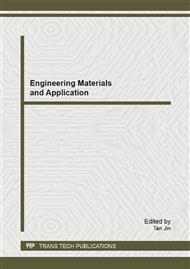p.187
p.193
p.198
p.204
p.210
p.216
p.221
p.227
p.232
A New Method for Predicting the Net Heat of Combustion of Organic Compounds
Abstract:
A quantitative structure–property relationship (QSPR) model for prediction of standard net heat of combustion (ΔH0c) was developed based on the ant colony optimization (ACO) method coupled with the partial least square (PLS) for variable selection. For developing this model, a diverse set of 1650 organic compounds were used, and 1481 molecular descriptors were calculated for every compound. Four molecular descriptors were screened out as the parameters of the model, which was finally constructed using multi-linear regression (MLR) method. The squared correlation coefficient R2 of the model was 0.995 for the training set of 1322 compounds. For the test set of 328 compounds, the corresponding R2 was 0.996. The results of this study showed that an accurate prediction model for ΔH0c could be obtained by using the ant colony optimization method. Moreover, this study can provide a new way for predicting the ΔH0cof organic compounds for engineering based on only their molecular structures.
Info:
Periodical:
Pages:
210-215
Citation:
Online since:
January 2013
Authors:
Price:
Сopyright:
© 2013 Trans Tech Publications Ltd. All Rights Reserved
Share:
Citation:


